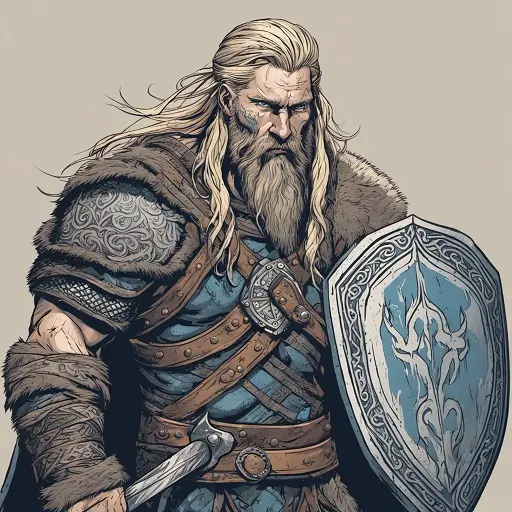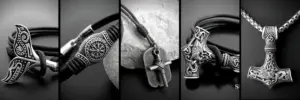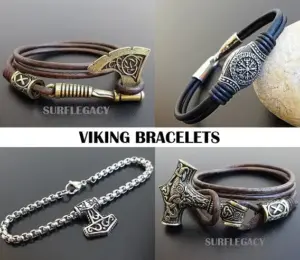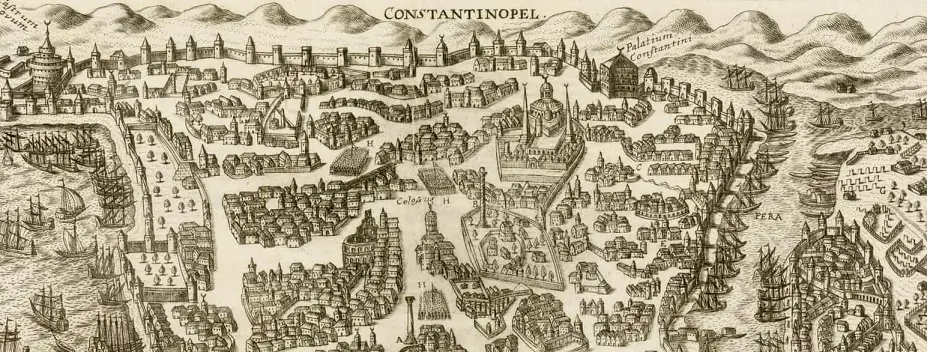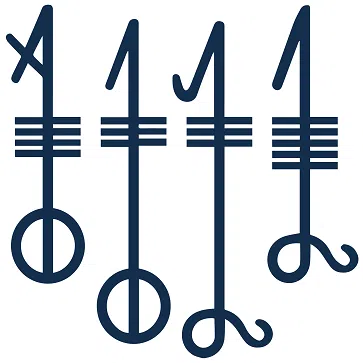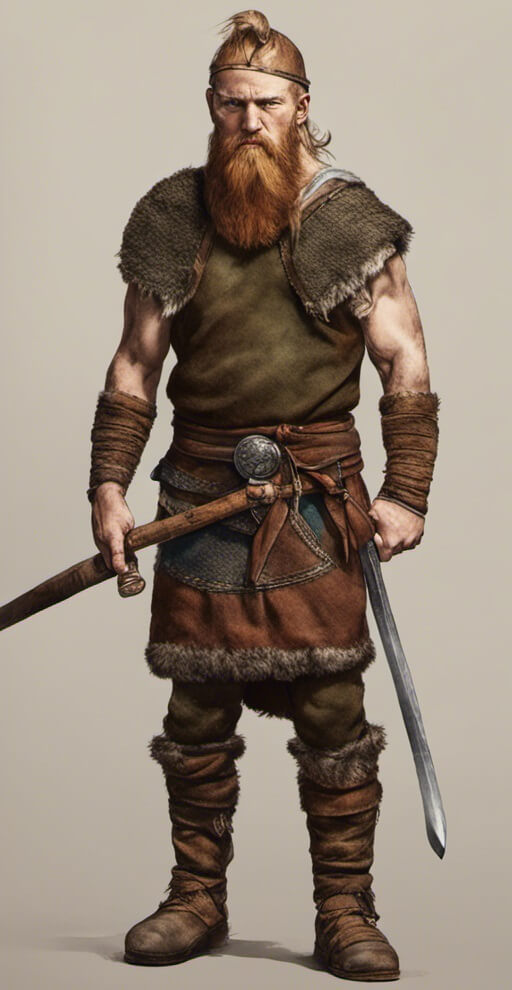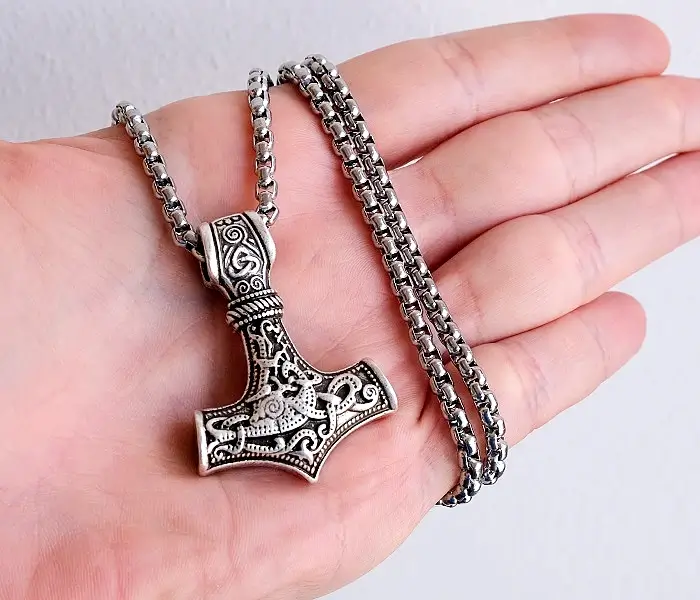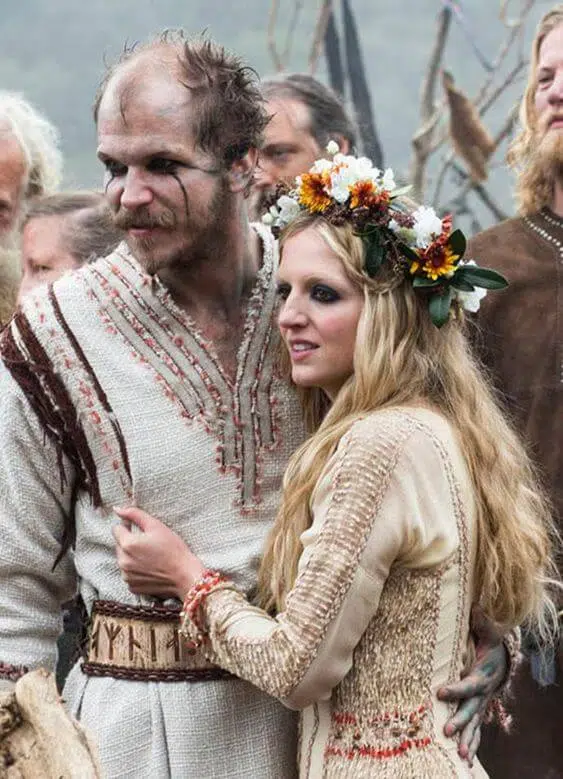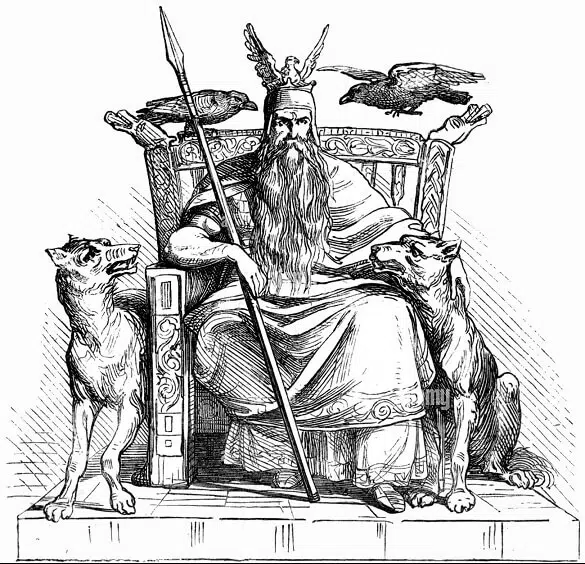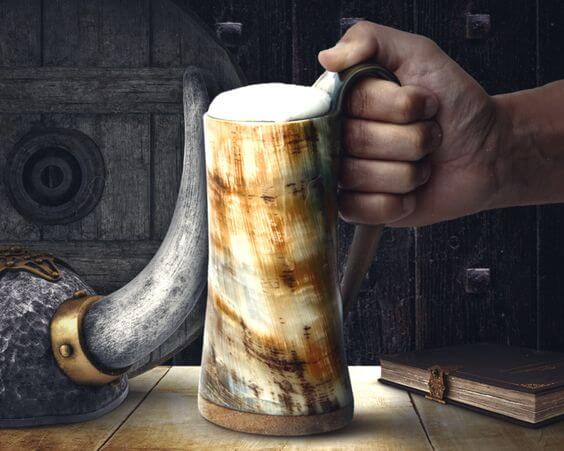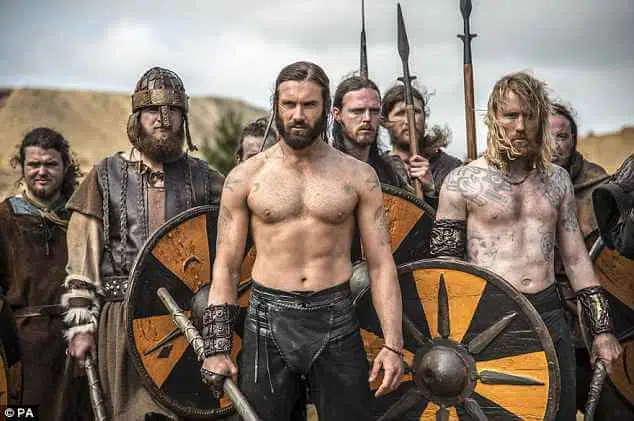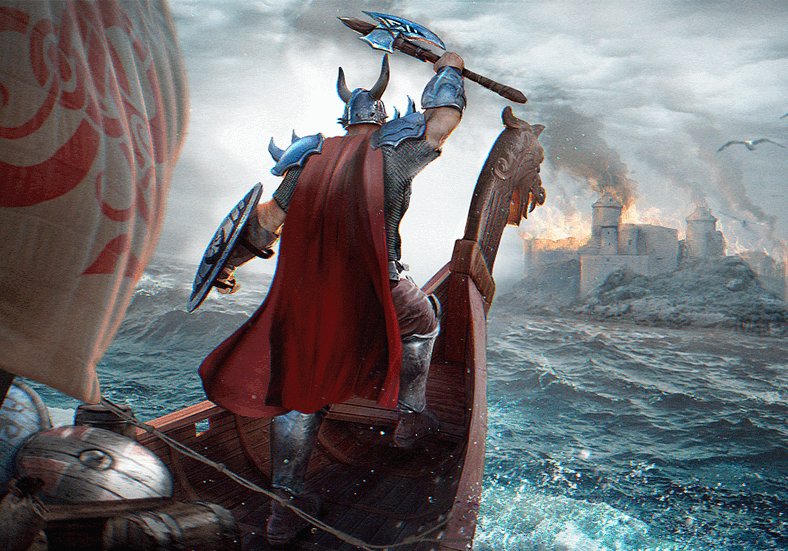The Viking Age was a dynamic period in European history when Norse seafarers from Scandinavia conducted raids, trading, and exploration across vast distances from eastern Canada to the Caspian Sea.
This era is typically dated from the Lindisfarne raid in 793 CE to the Battle of Stamford Bridge in 1066 CE. Over the course of nearly 300 years, Norse activity shaped and transformed societies from the British Isles to Russia. But what ultimately brought about the end of the Viking Age?
The cessation of major Viking raids was a gradual process caused by multiple interlocking political, economic, religious, technological, and cultural shifts in Europe as well as changes within Scandinavian society itself.
There is no singular event that definitively marked the end of the Viking Age, but rather a slow decline of raiding activity due to the growth of powerful centralized kingdoms abroad and at home, the conversion to Christianity, and the assimilation of Vikings into the cultures they interacted with.
What will I learn from this article?
- The reasons why major Viking raids tapered off over the 11th century
- How changes within Scandinavia contributed to the end of the Viking Age
- How evolving conditions across Europe made raiding less practical
- Notable events that marked the end of the Viking Age
- That Vikings assimilated rather than disappeared entirely
What Ended the Viking Age?
The Viking Age was fueled in part by specific conditions within Scandinavia – Norway, Sweden, and Denmark. These conditions changed over time, contributing to the eventual halt of raiding activity.
Political Turmoil and Land Pressure
In the late 8th century, Scandinavia lacked centralized authority and was divided into many small kingdoms frequently at war with one another.
The formation of petty kingdoms led some chieftains and their followers to seek their fortunes abroad through raids. There may have also been population pressures, as the difficult terrain and infertile soil in Norway, for example, limited farmland and resources, again spurring maritime raids.
During the 10th and 11th centuries, as later Viking kings consolidated power over larger territories, they exerted more control over their subjects and raiding became less frequent.
Unification in Norway intensified under Harald Fairhair in the late 9th century. He subdued Viking chieftains who then fled overseas. The rise of the Christian Church also helped strengthen royal power. As kings and local rulers converted, they issued codes of law that gradually suppressed Viking raiding.
From Raiders to Traders
In the early Viking Age, plunder and tribute extracted by force was a major motivation for raids. However, by the 11th century, Vikings increasingly engaged in trade and commerce.
They established permanent settlements like Dublin, metastasizing from raids to international trade. Wealthy Vikings invested in merchant ships like the knarr, built for cargo rather than speed and war.
Trading towns cropped up in Scandinavia and commerce flourished. As economic opportunities through trade grew, raiding became less attractive.
Shift from Warrior to Court Culture
Viking society originally centered on a warrior culture that prized martial prowess. Younger sons typically went abroad on raids to earn wealth and glory since they did not inherit land. But by the 11th century, Scandinavian kings had imposed more political order.
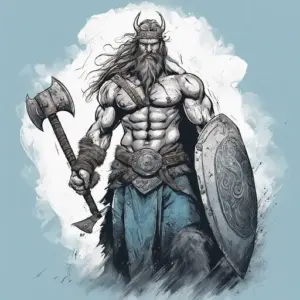
They aimed to settle disputes peacefully through courts rather than clan violence. Military service was then fulfilled via organized levies. With more legitimate economic means available, raiding lost its appeal for most Vikings.
Assimilation Abroad
During their expansion across Europe, Vikings who settled abroad often intermarried locals and assimilated into the culture. In Normandy, founded in 911 CE, Norse newcomers adopted the French language and Christianity within a couple generations.
Viking descendant William the Conqueror spearheaded the 1066 Norman invasion of England. The assimilation of Vikings into other societies like the Kievan Rus also reduced the distinct Scandinavian identity associated with raids.

William as depicted in the Bayeux Tapestry during the Battle of Hastings
The Varangians in eastern Europe similarly blended into Slavic society. Although they maintained ties to Scandinavia, they increasingly served the priorities of Slavic rulers.
The pull of raiding and exploring for Scandinavian youth lessened as social and familial bonds developed abroad. Raiding conflicted with the new hybrid cultures Vikings had become part of.
Factors Abroad
Beyond changes in Scandinavia itself, evolving conditions across Europe and the British Isles during the 11th century also compelled Vikings to stop raiding.
Growth of Defended Towns and Fortifications
In the 9th century, monasteries and towns in western Europe were vulnerable to rapid coastal raids. They lacked defenses against the mobile Viking longships. But in response to repeated attacks, urban areas began to fortify.
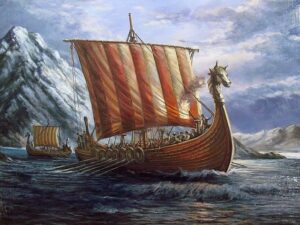
English towns relocated further inland and built protective walls while monasteries constructed fortified towers to safeguard valuables.
The Irish monastery on Iona, repeatedly struck by Vikings, relocated to the Scottish mainland. These defensive measures made raids more difficult and hazardous.
Stronger Centralized Kingdoms
Where Vikings had dealt with fractured petty kingdoms, by the 11th century they faced unified realms with organized militaries and navies.
The Holy Roman Empire emerged in central Europe, while in England the Wessex kings consolidated control. Hostile encounters intensified as kings resisted and fought Vikings on large scales compared to local skirmishes earlier.
The Anglo-Saxon king Alfred the Great, for example, decimated the Great Heathen Army in 878 CE with a centralized military. His successors fortified Wessex against Vikings.
Standing armies and navies with superior ships countered Viking longboats. Technological innovations like castles also deprived Vikings of easy targets, reducing the efficacy of hit-and-run raids.
With more wealth and administrative control, kings could afford to mount stronger defenses. The change from fractured lands to ordered kingdoms forced Vikings to reconsider the practicality of raiding.
Growing Trade and Prosperity
As order increased across Europe, so did trade and prosperity. Markets and towns expanded, accessed by new roads and sea routes. Wealth became more tied to international commerce than plunder.
Vikings sailed great distances as merchants rather than just raiders, visiting markets as far as Constantinople and Baghdad to trade. Increased economic integration made raiding European communities less profitable.
It disrupted trade, and Viking merchant towns like Hedeby in Denmark also declined when raids resumed periodically. Conflict was bad for business.
The Christianization of Scandinavia occurred gradually from the 9th to 12th centuries. But as the Church expanded its influence, it eventually succeeded in curtailing Viking raiding.
Christian kings issued edicts against raiding while the faith spread among the Norse population who had previously followed pagan practices.
The Church persuaded Vikings their old ways were sinful. Although religion did not instantly end raiding, it was a powerful new factor reducing its prevalence over time.
Improved Fortifications and Military Capabilities
Viking longships were highly maneuverable raiding vessels, but lagged behind evolving naval technology elsewhere by the 11th century. Clinker-built longships relied on human muscle power, while sailing ships utilized wind power with wider hulls and more advanced rigging.
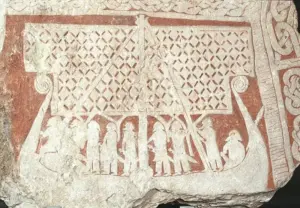
Detail of longship from picture stone 800-1099 Tjängvide, Gotland.
European navies also began employing castles on ships for archers to suppress raiders. The leap in naval tech left longships increasingly vulnerable.
Technological and tactical innovations also favored defensive forces on land against Viking raids. Anglo-Saxon burghs strategically located on rivers resisted Vikings militarily.
Mounted cavalry provided greater mobility to counter Viking ground assaults. Improved fortifications and crossbows enabled defenders to inflict heavy casualties. The military edge Vikings enjoyed was fading.
Factors Leading to the End of the Viking Age
| Factor | Description |
|---|---|
| Rise of centralized kingdoms | Powerful rulers exerted control over raids and fielded organized militaries to resist Vikings |
| Improved fortifications | Walled towns and castles deprived Vikings of easy coastal targets |
| Growth of trade | Raiding disrupted lucrative trade networks that Vikings participated in |
| Spread of Christianity | Pagan practice of raiding conflicted with Christian norms against violence |
| Assimilation | Vikings intermarried locals where they settled and blended into hybrid cultures |
| Naval technology | Advancements favored European navies over Viking longships |
| Political consolidation | Unified Scandinavian kingdoms suppressed raiding by subjects |
Notable Events Marking the End
No single event marks the definitive end of the Viking Age, however, certain historical moments in the 11th century did signal major turning points after which raiding was never the same again.
These moments underscored the military decline of Vikings against organized kingdoms and the transition from pagan raiders to Christian subjects.
Battle of Stamford Bridge (1066)
The Battle of Stamford Bridge in 1066 CE was a milestone when Saxon King Harold Godwinson decisively defeated the Norwegian Viking king Harald Hardrada who sought to claim England’s throne.
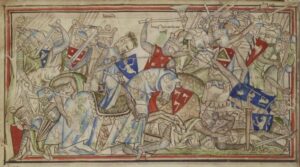
Harald Hardrada and the Battle of Stamford Bridge in 1066
Godwinson’s surprise attack left the Norwegians severely depleted. Although Vikings had battered England for centuries, their aspirations of conquest met a fatal setback.
Stamford Bridge demonstrated that Scandinavian forces could no longer contend militarily with Anglo-Saxon royal power. It was the last major Viking invasion of England.
Christianization of Iceland (1000 CE)
The adoption of Christianity throughout Iceland around 1000 CE represented the growing religious transformation. Iceland peacefully converted at the national level through the Althing parliament, influenced by Norway’s king.
The conversion marked the definitive ascendancy of Christendom in a major Viking heartland. Violence and raiding increasingly clashed with Christian norms. While pagans and Christians co-existed for years after, the Church eventually dominated Icelandic society.
Death of King Cnut (1035 CE)
King Cnut the Great, who ruled England, Denmark, and Norway in the early 11th century, personified the height of Viking power abroad.
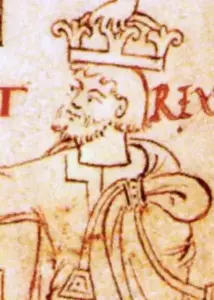
Canute, c.995-1035. Illuminated manuscript, Liber Vitae, 1031, The British Library.
His North Sea empire reflected Viking conquests across the sea, but after Cnut died in 1035 CE, this vast domain crumbled as power returned to Anglo-Saxon rulers in England.
The dissolution of Cnut’s empire showed that Vikings could not sustain political control indefinitely in foreign lands they once freely raided.
So in summary, no single dramatic event concluded the Viking Age.
Rather, the raids that defined the Viking era gradually ended due to evolving cultural, economic, religious, and political forces in Scandinavia and abroad.
The pull of raiding paled as Vikings assimilated into local populations across Europe, converting to Christianity and developing new means of livelihood tied to land and trade.
At the same time, robust kingdoms arose with the military means to thwart Vikings militarily. For the Norse people themselves, the Viking Age did not represent the end – they continued to inhabit Scandinavia and settlements established abroad.
Their interactions became more peaceful, bound by law and commerce rather than violent plunder. The word “Viking” gave way to “Danes”, “Swedes”, and other identifiers as Scandinavians blended into the fabric of Medieval Europe.
The Viking Legacy
While the Viking Age came to an end, the impact of Norse exploration and expansion can still be felt to this day. Their settlements endured in Iceland, Greenland, and other outposts in the North Atlantic.
Place names and linguistic influences persist in regions like Normandy, Ireland, Scotland, and England. Norse descendants carved out kingdoms and duchies across Europe, from Sicily to Kiev.
Viking shipping technology aided the growth of commerce. Trade empires like the Hanseatic League emerged from once primitive trading posts.
Norse myths and legends found renewed interest during the Romantic era, inspiring art and literature. Even the very term “Viking” underwent a rehabilitation from its initial negative connotation.
While their feared raids faded away, the Vikings left an undeniable imprint on medieval history and shaped kingdoms that arose in their wake. Much of modern Scandinavian culture also retains threads of its enigmatic Viking past.
Key Takeaways:
- The end of the Viking Age was a gradual process driven by a complex interplay of factors within Scandinavia and abroad, rather than a single dramatic event.
- Changes within Scandinavia included the rise of powerful kings who exerted control over raiding activities, the conversion of the Norse population to Christianity, and the shift from raiding to trade as a means of livelihood.
- Abroad, the fortification of towns and the emergence of strong centralized kingdoms with organized militaries made Viking raids less practical and more hazardous.
- Advances in naval technology, such as the adoption of sailing ships with wind power, favored European navies over Viking longships, reducing the efficacy of Viking raiding.
- The spread of Christianity in Scandinavia and the associated norms against violence conflicted with the pagan practice of raiding, contributing to a decline in raiding activities over time.
- Vikings who settled abroad often intermarried with local populations, leading to assimilation and the blending of Norse culture into the cultures they interacted with.
- Defining events like the Battle of Stamford Bridge in 1066 CE demonstrated that Viking forces could no longer contend militarily with the organized kingdoms they encountered.
- While the Viking Age ended, its legacy persists in the form of Norse settlements, place names, and linguistic influences in regions across Europe. Viking contributions to trade, technology, and culture continue to shape modern society.
FAQ about the End of the Viking Age
Did the Vikings simply disappear?
No, the Norse people who conducted raids during the Viking Age did not vanish. They continued to inhabit Scandinavia and settlements established abroad. After assimilating into local populations and converting to Christianity, their warlike raiding activities declined.
Were the Vikings completely wiped out militarily to end the Viking Age?
No. There was no climatic military defeat of all Vikings, but growing political centralization abroad enabled kingdoms to effectively thwart major raids. Vikings integrated into the regions they had once freely plundered.
Did climate change cause the Viking Age to end?
No. Some early theories proposed climate shifts ended Viking expansion, but there is little evidence for this. Changing social, economic, religious, and political patterns appear to be the primary factors that gradually suppressed raiding.
Does the Norman conquest of England in 1066 mark the end of the Vikings?
The 1066 Battle of Stamford Bridge which defeated the Norse king Harald Hardrada is often designated as the end since it was the last major Viking incursion. But Norse cultural influence continued, as seen in how the Norman conquest permanently embedded Viking descendants in England.
Did the Little Ice Age wipe out Viking settlements like Greenland?
No. Climate cooled during the Little Ice Age between 1300-1850 CE, well after the decline of the Viking Age. But climate alone does not account for the abandonment of Viking settlements in Greenland and elsewhere. Complex factors like soil erosion and trade collapse impacted the Norse colonies.
Why did Viking raids stop?
Viking raids tapered off and ultimately stopped completely due to a combination of factors. Within Scandinavia, the rise of centralized kingdoms exerted control over raiding while conversion to Christianity also discouraged it.
Abroad, strengthening European states developed military countermeasures including fortifications and navies. Growing trade made raiding economically disruptive.
The Vikings also culturally assimilated into many foreign societies. These conditions in the 11th century made large-scale raiding increasingly difficult and less advantageous. Small-scale conflicts continued sporadically, but the distinct Viking Age ended as Norse culture merged into the fabric of medieval Europe.
Why did Vikings convert to Christianity?
The Christianization of the Vikings was a gradual process, but a few key reasons stand out. As Viking rulers established more centralized power, aligning with Christianity helped legitimize their authority. Christian kings applied pressure to convert.
Missionaries also directly spread the faith. Conversion opened more trade opportunities with Christian nations. The Church presented Christ as a heroic warrior-god familiar to the Vikings.
After exposure to Christian cultures abroad, Norse pagan beliefs likely seemed outdated to some Vikings. While not every Viking converted, Christianity ultimately prevailed and became entwined with Scandinavian identity.
Conclusion
The end of the Viking Age was not marked by a single cataclysmic event, but rather by a gradual transformation shaped by a multitude of cultural, economic, religious, and political forces.
The Vikings, who were once feared raiders, transitioned into settlers and traders, assimilating into the cultures they encountered across Europe.
The rise of powerful centralized kingdoms, the spread of Christianity, improved fortifications, and the growth of trade all contributed to the decline of Viking raids. While defining moments like the Battle of Stamford Bridge and the Christianization of Iceland highlighted the diminishing military prowess of the Vikings, their legacy endured.
The impact of Norse exploration and expansion can still be felt in the modern world, as their settlements, linguistic influences, and cultural contributions continue to shape the societies that emerged in their wake. The Viking Age may have ended, but its legacy remains an indelible part of history.
Shop Viking Jewelry
Are passionate about Vikings or Norse Mythology?
Finding the ideal piece of Viking Jewelry can be challenging and time-consuming, especially if you lack inspiration or don’t know where to look.
Surflegacy, has you covered. We have a wide range of Handmade Jewelry in various styles, shapes, colors, and materials, to accentuate your Viking spirit and look. Do not hesitate to visit our selection HERE
Whatever you wear, you’ll find the ideal trendy piece to complement your wardrobe. Our jewelry is designed to be worn every day, no matter where you go or what season is. Are you ready to step up your wardrobe game?

